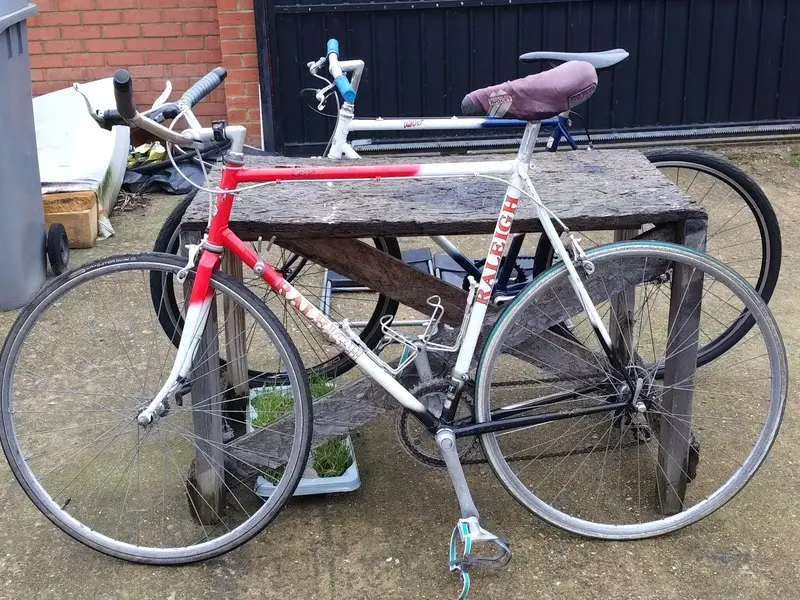Hi All,
I've just picked up a Raleigh Corsa it has exage sport front mech and rear derailleur, looks like exage hubs, basically exage everything. sakae stem. I don't know much about it other than it's 531 Reynolds butted, I don't know if it is main tubes or everything.
Also I thing the rims are clinchers, it feels like the tyres (tires?) are glued on.
Can anyone shed any light on this thing, everything I have read so far points to a Reynolds 501, in Panasonic colours.
I know this should have come with drop bars but for the price I'm not to bothered (especially since I was planning on going for flat bars later).
Can anyone tell me anything about this bike?
Someone commented that the red and white were the Raleigh team colours in the late 80s, is there any truth to this?
Thanks in advance.

I've just picked up a Raleigh Corsa it has exage sport front mech and rear derailleur, looks like exage hubs, basically exage everything. sakae stem. I don't know much about it other than it's 531 Reynolds butted, I don't know if it is main tubes or everything.
Also I thing the rims are clinchers, it feels like the tyres (tires?) are glued on.
Can anyone shed any light on this thing, everything I have read so far points to a Reynolds 501, in Panasonic colours.
I know this should have come with drop bars but for the price I'm not to bothered (especially since I was planning on going for flat bars later).
Can anyone tell me anything about this bike?
Someone commented that the red and white were the Raleigh team colours in the late 80s, is there any truth to this?
Thanks in advance.
